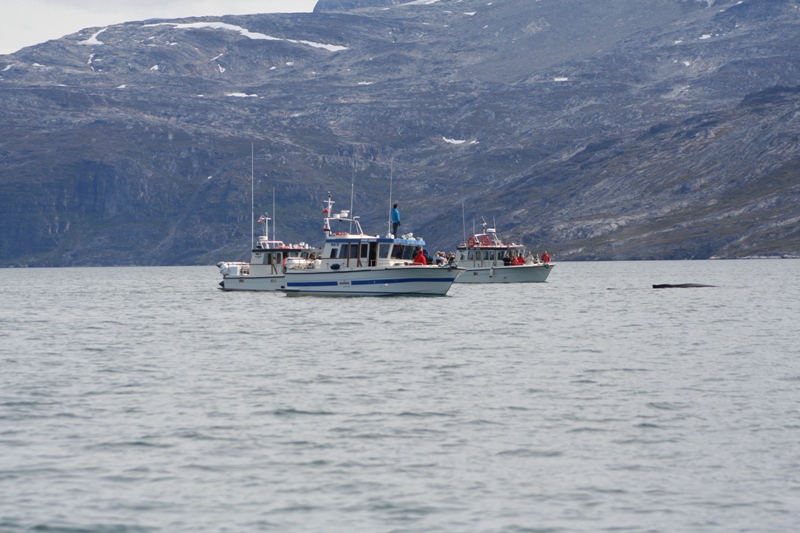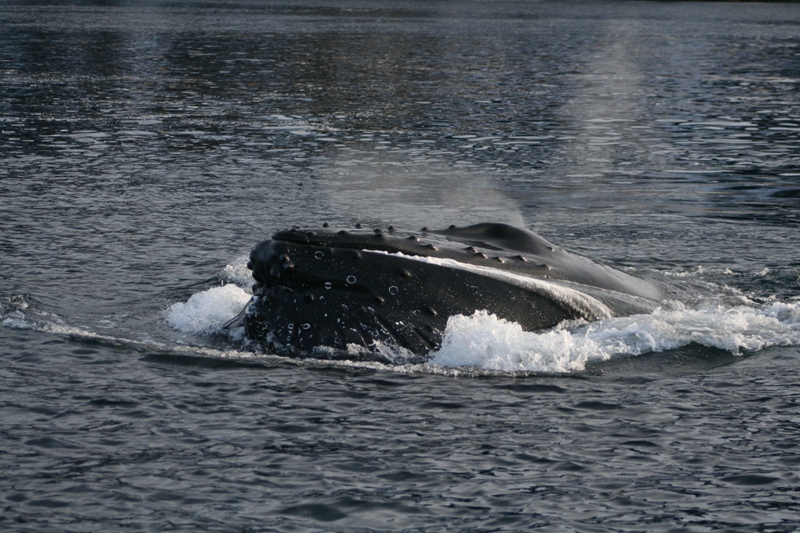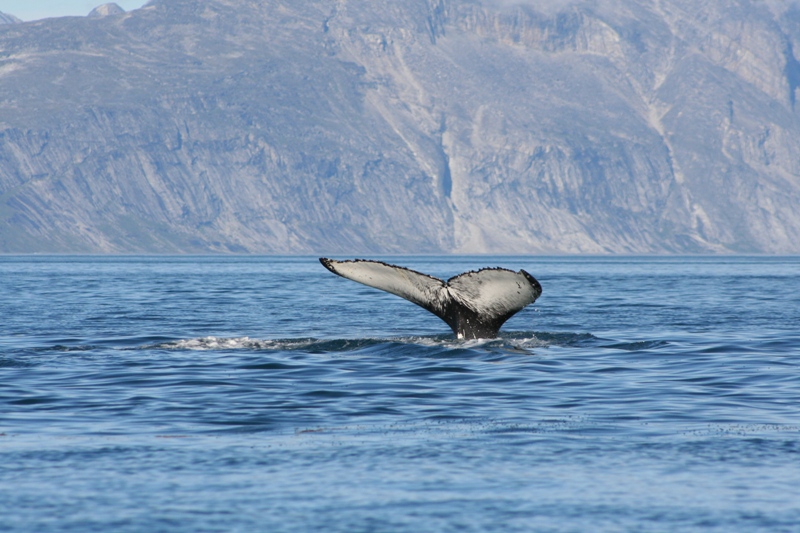Whale watching disturb humpback whales Published 26.05.2010

Greenland Institute of Natural Ressources and outfitters in Nuuk study the effects of whale watching on hump back whales this summer.
As in many other places, whale watching in Greenland is a growing activity. A study carried out during 2007 and 2008 showed that the feeding dives of humpback whales in Nuuk were shorter in the presence of whale watching boats. This summer, the research will be carried one step forward to test if whales are less affected when boat drivers follow a simple set of rules when approaching the animals. By measuring time periods that whales spend between each time they come to the surface to breath, biologists will search for differences in surface behaviour of whales under the influence of whale watching boats following the proposed code of conduct, whale watching boats not following these guidelines and whales under no influence of boats. The ultimate goal is to produce a set of guidelines for whale watching that results in minimal disturbance to the whales.
The study will be carried out by biologist Tenna Boye and Malene Simon of the Greenland Institute of Natural Resources (GINR), in collaboration with tour operators Tupilak Travels and Nuuk Tourism, all Wild North partners. Until now, the study has received financial support from Greenland Tourism & Business Council (another Wild North Partner), the Greenland Ministry of Culture, Education, Research and Church and GINR.

Lunch is served! Hump back whale foraging in the surface Nuup Kangerlua 2009 Photo: Tenna Boye
In 2009 Tenna Boye presented a study of habitat use of hump back whales in Nuuk fjord included in her Master Thesis ”Home, sweet, Home” from 2009.
North Atlantic humpback whales migrate from low latitude breeding grounds to four different high latitude feeding areas to which individuals display large scale site fidelity. In Nuuk fjord, West Greenland, humpback whales are present from early spring to late autumn. To study small scale site fidelity and residence time in this habitat, ID-photos were collected from May to September 2007 and 2008 and compared with an older catalogue. Individual humpback whales in the presence and absence of boats were tracked from land using a theodolite to test if whale watching had an effect on whale behavior.
Tenna Boye found a strong degree of small scale site fidelity where 40% of the whales present in 2007 were resighted in 2008. The resight rate from 1992 to 2008 was 24.1%. Individuals did not stay in the fjord the entire season and residence time was highly variable amongst individuals varying between 6.7-60% of the time from May to September. Whale watching was shown to significantly increase swimming speed, cause abbreviated foraging dives and
diminish the ratio between surfacings and foraging dives. In conclusion the same foraging whales use this fjord system year after year, which calls for regulation of whale watching and for consideration when discussing the reopening hunt of humpback whales in West Greenland.
Photoidentification of whale tails is an on-going project. “We are happy to receive photos of diving whales, not just from Nuuk fjord, but from the entire coastline of Western Greenland” says whale scientist Malene Simon, GINR. “When recieving a photo we match it with our catalogue and afterwards we send information about the whale to the sender. “
Please forward pictures and information about siting location to pukkelhval@natur.gl or qipoqqaq@natur.gl

Hump back whales show their tail before a deep dive Photo: Tenna Boye

